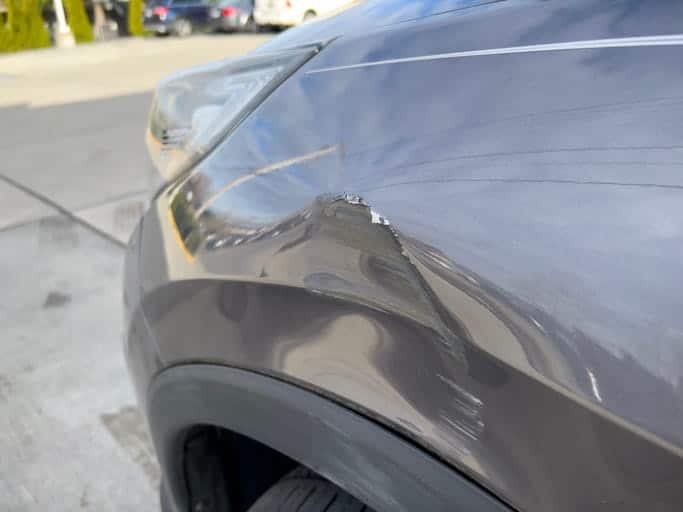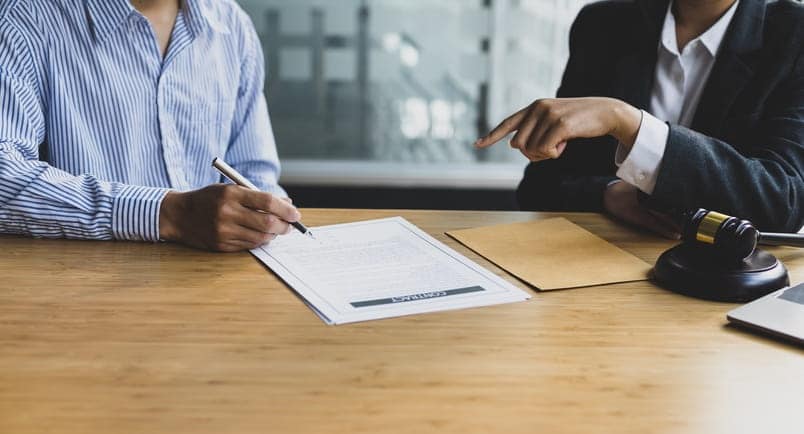What should you do if you’re involved in a hit-and-run?
Anyone involved in a car crash, including hit-and-run accidents, should take some crucial steps after the accident. The essential steps to take include the following:/blog/can-i-sue-a-hit-and-run-driver/
- Stay at the scene: Florida laws require motorists to remain at the accident scene
- Render aid: Check to see if anyone is injured and perform first aid if required. Call for an ambulance.
- Call 911: Motorists are legally required to report any accidents involving $500 or more in property damage or causing injuries. Reporting the accident to the police enables you to get a police report for the accident, which can help you build your case if you need to pursue a civil suit.
- Exchange information: All drivers should exchange contact and insurance information
- Make notes: Written records are crucial evidence when determining fault in an accident investigation or proving grounds for a claim in court. Make notes about the accident, including where and when it occurred, how many vehicles were involved, and whether any pedestrians or animals were involved. Note the weather conditions and other details that may be relevant, such as whether the traffic lights were out or a wind gust blew an object onto the road.
- Create visual records: Use your smartphone to take photos of the scene. You can also take video footage. Take images of the vehicles involved in the accident, the setting, anyone stopped at the accident scene and nearby buildings. Photos and videos of the crowd can help you identify potential witnesses. Photos of nearby buildings could help your legal team locate video footage of the accident.
- Collect witness information: Approach witnesses and ask for their names and contact information. Witnesses can help your case if you need to seek damages from the at-fault party.
- Talk to a lawyer: Your car accident lawyer will explain what you should and should not do after the accident, preventing you from making mistakes at the accident scene. You may be in shock and need to be made aware of the steps you should take. You can call a car accident lawyer for a free consultation from the scene, and they’ll walk you through the process of reporting your accident and clarify what you do and do not need to tell the police.
- Seek medical care: Many accident victims are in shock and may not think clearly after an accident. You may not realize you’re injured until hours later. Seeking prompt medical treatment ensures you confirm any injuries you suffered and receive immediate treatment.
Florida’s laws on hit-and-runs
As noted, Florida law 316.061 requires motorists to remain at the accident scene. Drivers can face criminal charges for fleeing the scene of an accident.
Drivers must also report the accident to the local police department and exchange information with others involved in the accident. Drivers must also provide medical care when possible to anyone injured in the accident.
These laws don’t apply when a driver is injured and unable to perform these tasks. Suppose you’re in an accident where you suffer head trauma and are unconscious. If paramedics remove you from the scene for medical treatment, you aren’t fleeing the scene. You won’t be penalized for failing to offer medical aid or report the accident to authorities.
Penalties for leaving the scene of an accident
The accident’s severity is one factor used to determine the penalties for leaving the scene. Suppose a driver leaves the scene of an accident that caused property damage. That driver may spend up to two months in jail and pay a fine.
However, a hit-and-run driver may face felony charges for leaving the scene of an accident that caused injuries or death. In addition to having their license suspended and paying a fine, they can spend years in prison. A hit-and-run driver involved in an accident causing injuries may face a prison sentence of five years, while a hit-and-run driver involved in an accident causing someone’s death could face a prison sentence of 30 years.
Who pays for damages?
Florida’s no-fault laws mean all drivers use their insurer to cover specific costs after an accident. All drivers are required to maintain a personal injury protection (PIP) policy of $10,000 or more. All drivers use their PIP insurance to cover most of their medical expenses and lost income if they miss time at work because of their accident.
Motorists must also carry at least $10,000 in property damage liability (PDL) insurance. PDL coverage compensates drivers for damage to their vehicle and other property damage costs.
Your health insurance plan may cover expenses not covered by your PIP insurance. You can also use your underinsured or uninsured driver coverage to cover additional expenses if the driver does not carry the required amounts of coverage.
What recourse do I have if a hit-and-run driver has injured me?
Although Florida is a no-fault state, and people use their insurance policies to cover accident expenses, individuals in serious accidents can pursue claims against the at-fault party through a civil suit. Filing a civil lawsuit enables victims with severe injuries and expenses to recover damages from the at-fault driver.
Accident victims can seek economic damages to cover accident-related expenses:
- Childcare costs
- House cleaning bills
- Job retraining
- Lost income
- Medical bills
- Personal care costs
- Property damage costs
- Transportation costs
Accident victims can also seek non-economic damages, which offer financial compensation for the personal impact of the accident on their lives. Non-economic damages can provide victims with compensation for the following:
- Anxiety
- Depression
- Loss of Intimacy
- Pain
- Suffering
- Post-traumatic stress disorder (PTSD)
Common reasons drivers flee the scene of an accident
There are several potential reasons a driver might leave the scene of a car accident, including the following:
- Distracted driving: The driver may be aware that they took their eyes off the road, took their hands off the wheel, or were mentally distracted while driving, and this caused their accident
- Driving under the influence: Suppose a driver recently took drugs or consumed alcohol. They may be afraid of facing charges.
- Insurance issues: The driver may not stay at the scene if they’re underinsured or uninsured
- Issues with license: An underage driver or someone whose license has been suspended may flee the scene to avoid penalties
- Negligence: Negligent drivers include those breaking traffic laws, such as those texting while driving or speeding
- Outstanding warrants: A driver might not stay at the accident scene if they know there’s a warrant out for their arrest
- Reckless driving: Suppose a motorist is drag racing with another driver. They’re involved in an accident during the drag race. They may flee the scene because they know their reckless conduct caused the accident.
- Shock: Sometimes, drivers are in shock and not thinking clearly after an accident. Being in shock may prompt a driver to leave the scene.


